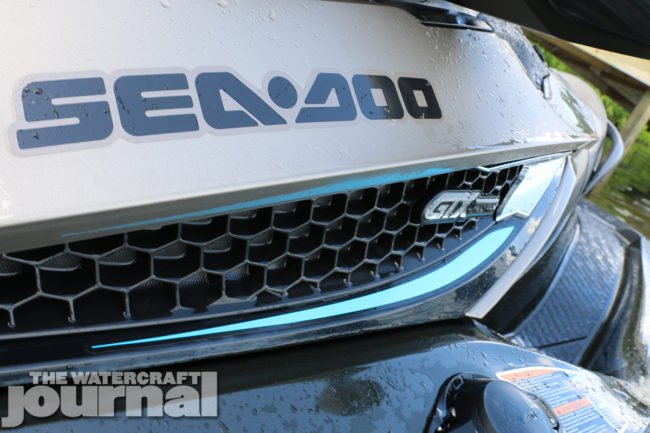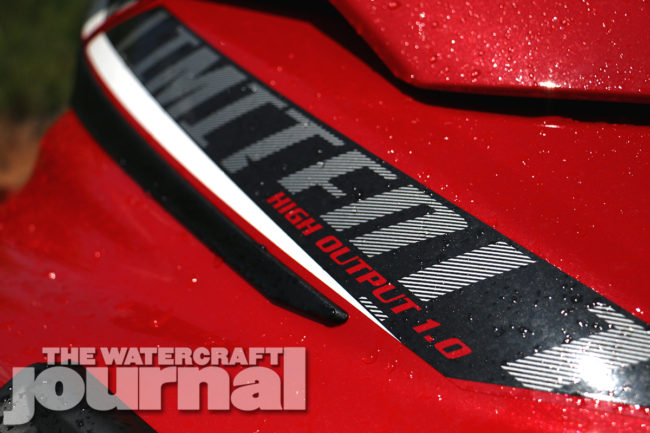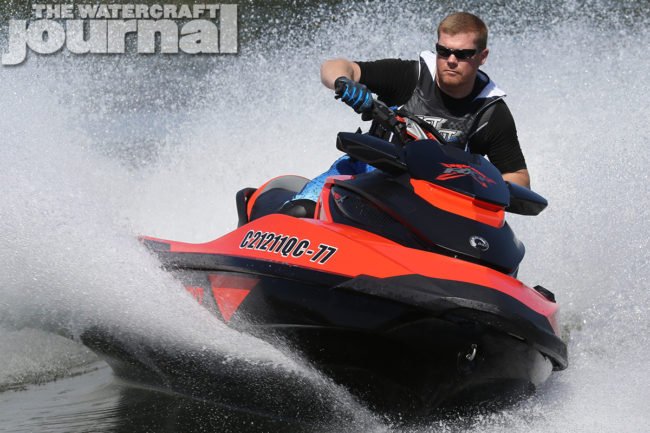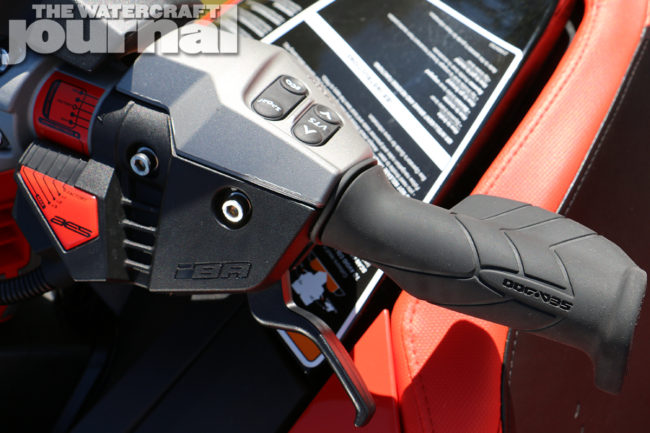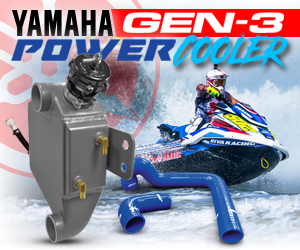This year’s decision in awarding the 2016 Watercraft of The Year came down to two different pairs of tiebreakers. Unlike last year’s Watercraft of The Year winner or our infamously divisive 2014 Watercraft of The Year winner, this year was a showdown between two very different runabout offerings looking to magnify the personal watercraft owner experience in their own respective markets, and a second split between two models who share similar DNA but ultimately speak to different breeds of enthusiast. Frankly, we grappled long and hard – as much so as our first winner – and while we thought months in advance who this year’s winner was, our “shoe-in” came in as the second runner-up when finally weighed.
In review, 2016 was a stellar year for personal watercraft, far more so than people give credit to. Domestic sales continued to climb, even higher than the year previous with large swathes of new and returning buyers entering in through the glass double doors of dealerships across the continent. Obviously, performance was the name of the game for Sea-Doo in 2016, and its heavily revised ACE 300 (replacing the 1503 Rotax) producing a whopping 300-horsepower made significant waves in the industry. On the other side of the pendulum, Yamaha introduced its replacement powerplant the TR-1, a lightweight 1-liter 3-cylinder for the budget-minded VX platform newly refreshed a year prior.
The ensuing result was a year rife with several new machines as well as several with new engines that not only provided endless quantities of excitement, but mounds of options, accessories and applications to tickle the fancy of anyone considering a new PWC. This parade of new machinery spurred a wave of aftermarket tuners scurrying to slap on turbochargers, reflash computers, and otherwise eke out as much untapped potential buried deep within these watercraft as humanly possible. While we’re not awarding this year for its singular appeal to the top tier performance enthusiast, we are acknowledging the massive impact each of these machines have had (and will continue to do so) on their respective market segments – because, quite frankly, there are three represented here. So with no further ado, we present to you your 2016 Watercraft of The Year!
2016 Watercraft of The Year 2nd Runner-Up: 2016 Sea-Doo GTX 300 Limited
Admittedly, we were poised to give the ’16 Sea-Doo GTX 300 Limited the crown early in the year. From top to bottom, the current top-of-the-line GTX is worthy of a torrent of praise. Yet, it was not a battle of personal bias that lead to the Sea-Doo taking the 2nd Runner-Up position, but a single point on our judging sheet separating it from the first runner-up spot. Obviously, the new 1.6-liter 4-stroke ACE 300 is a central feature in the GTX’s appeal, and rightfully so. The larger displacement engine produces 15-percent more power than the outgoing 1503 4-Tec’s 260 horsepower output. And the GTX (when engaged in Sport Mode) aptly leaps to action with a snap of the Intelligent Throttle Control (iTC) trigger.
Yet again, the GTX 300 Limited is much more than the new powerplant beneath its seat. Standard equipment on this luxury rocket is everything you’ve ogled at in Sea-Doo’s accessory catalog: a watertight, removable front bin that locks into place via two toggles; a zippered carrying bag with an additional hard-backed zippered case all for carrying valuables in the voluminous glove box; absurdly easy-to-navigate controls integrated into the tilt handlebars, which are themselves integrated into Sea-Doo’s Interactive Multifunction Digital Information Center (gauge cluster) reading GPS-correct speed, RPMs, VTS, fuel level and rate of consumption (both immediate and average), hour meter, compass, clock, depth gauge, and F-N-R indicator.
Of which, the GTX wields Sea-Doo’s new iBR system that employs a redesigned three-piece bucket system that deploys to slow the RXT-X 160-feet shorter than other non-brake equipped watercraft. New too are the motor, actuators and mounting hardware, all in an effort to successfully eliminate the heavy nose-plowing of the previous iBR-equipped runabouts.
For 2016, the GTX also benefited from the addition of a completely reconfigured cockpit. Employing the brand’s Ergolock ergonomic design previously limited to only the RXP-X, the larger S3-platform runabouts suddenly found themselves with a narrow saddle with lateral coves where the rider can grip with their knees, helping reduce fatigue in the hands, arms and shoulders particularly in turns and through chop. The seat being pinched at the knees saves the rider from having their legs spread wide in the saddle. While all of this is enough to rightly justify purchasing one tomorrow, we struggled to keep its Jet Black Metallic and Deep Pewter Satin coloring waterspot-free, and wished several of its accessory door hinges weren’t so flimsy given its $15,999 asking price, ultimately placing the 2016 Sea-Doo GTX 300 Limited third on our podium.
2016 Watercraft of The Year Runner-Up: 2016 Yamaha VX Limited WaveRunner
As a single point separates the GTX 300 Limited from second place, so does a single point keep the VX Limited from claiming the top prize this year. Again, contention for Watercraft of The Year has never been tighter, and the 2016 Yamaha VX Limited WaveRunner put up an impressive fight. “But how?” many of you are asking. While the 125-horsepower, Recreation-class runabout doesn’t wield the supercharged oomph of a 300-plus-horsepower machine or carve the closed course like a world championship-winning craft, what you don’t see is the absolute marketing superiority of this “little runabout that could.”
Priced at $10,899, the VX Limited is not just a watercraft, but a complete family summertime fun package that includes a total number of official Yamaha accessories that retails for the double the cost of the Limited package over say, a VX Cruiser. Combined with the 18.5 gallons of fuel capacity and the TR-1’s super-efficient fuel consumption rate, and you’ve got a day’s worth of fun in a single price tag. So what does the “Limited” package include? First, the machine itself is wrapped in Yamaha’s Torch Red Metallic, a unique black and white Cruiser-style tiered seat, four pop-up cleats and chromed “Yamaha” badging, Cruise Assist and No Wake Mode as well as the brand’s now-standard RiDE dual-throttle braking and reverse system.
And yet, there’s so much more: the Limited includes a 12-volt socket in the glove box (ideal for charging a cell phone, GPS or VHF radio), an electric air pump, a single-passenger towable raft and tow rope (all color matched to the Limited), a true ski tow eye, a special rope bag that attaches to the helm, folding reboarding step, a dry bag, and special edition ski cover with a zipper access door to the glove box, and a hard case solar panel and trickle charger to maintain battery life while stored alongside or behind the house.
The 55-plus-mph top speed wasn’t exactly thrilling, and boy, we wish the outgoing FZR’s telescopic steering was available as an option on all VX-based machines, but the VX Limited does share the same hull and deck design with the GP1800, which promises to not come up empty in the the fun department. The storage is adequate (24.6 gallons), the swim platform is low and broad for easy reboarding, and the overall design is attractive. In all, the overall value in the VX Limited far exceeds the asking price. While it sounds like we’re swooning, we’re not the only ones. Yamaha sold every one of these babies this year.
2016 Watercraft of The Year Winner: 2016 Sea-Doo RXT-X 300
Upon the introduction of the 2016 Sea-Doo RXT-X 300, the S3-series hull was 8 years old. That’s pretty well along in years for a platform in this industry. Beginning with the RXT iS 255 to the RXT-X 260 and now to the current RXT-X, the 300-series RXT-X is the fulfillment of years of design, fine tuning and constant improvement; the culmination of professional racing innovation and aftermarket accessorizing that elevates this machine to super stardom. The RXT-X 300 is truly an impressive machine, one that if transported back to Carlsbad Lagoon in 1968, would blow the mind of a young Clayton Jacobson II. What we see as technology, our PWC fore-bearers would deem science fiction.
Unlike the aforementioned GTX 300 Limited, so much of this machine is weighed upon its new powerplant – because the ACE 300 gives this runabout life like Prometheus’ flame. The new 1630.5ccs 4-stroke ACE 300 is core the RXT’s appeal, particularly to the performance-minded enthusiast. Increased stroke (69.2mm) equating for 9-percent more displacement, and subsequently, 15-percent more power are the sirens’ song to the horsepower lover in all of us. Add to it 30-percent more boost (18psi) through a compact wheel that spins 8-percent faster at 47,000rpm with literally double the blades of the outgoing design – increased from 16 to 32 – and spinning on a heavily redesigned “maintenance free” supercharger shaft and what you’ve got is borderline pornographic.
Toss in a redesigned single-camshaft valvetrain configuration, a new cylinder head (with a more efficient combustion chamber quench), larger injectors, direct-ignition high-intensity coils, a second cooling circuit, a hybrid dry sump oiling system, larger heat extractor, and a new, larger intercooler that is 2.2-times more efficient and with double the cooling capacity totaling up to 33-percent improved engine cooling, and you’ve got enough to make an engine builder lose control. Processing all of that mid-range torque is the 10-vane stator, multi-diffuser venturi, new 159.5mm prop and larger diameter wear ring identical to the RXP-X 300, keeping the RXT-X’s pump loaded and biting hard at all times.
What places the 2016 RXT-X 300 at the top isn’t merely an increase in horsepower, but the intense attention given to rider ergonomics. Sea-Doo’s multi-point-of-adjustment AES (Adjustable Ergonomic Steering) handlebar and its eight points of adjustment is now adorned with Sea-Doo’s palm rest grips. Below are the biggest additions in the form of Sea-Doo’s Ergolock seating system and accompanying foot wedges from the RXP-X, allowing the rider to use their knees and thighs to pinch the narrow saddle just like the sportier P-X. The result is a dramatic difference in rider input and comfort, particularly while cutting a tight corner. Priced at $15,399, the 2016 Sea-Doo RXT-X 300 is both brute and sophisticate; a gentleman bare-knuckle boxer trimmed in a fine Armani suit and sporting an Apple Watch, and 100-percent worthy of this year’s Watercraft of The Year award.







